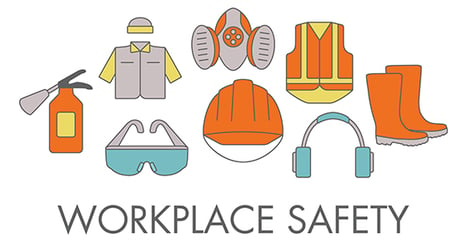
Physical safety is a priority for manufacturers, yet we continue to see high incident rates of injury in the industry. In 2020, there were 373,300 total cases of nonfatal injuries and illnesses recorded in the private manufacturing sector according to the US Bureau of Labor Statistics, of those 36% had days away from work and 29% had days of job transfer or restriction. Injuries can occur due to equipment failure, yet an often-overlooked contributing factor could be our biases and the immediate recipient of our bias is our employees.
- Status-quo bias can be described as a preference to maintain one’s current situation.
- Groupthink bias can be described as putting your own personal beliefs aside to confirm with others.
- Authority bias can be described as giving more credibility to the opinion of someone in authority.
These three biases have one thing in common; they create a culture in which employees don’t feel safe to ask questions, to contribute, or challenge the status quo. To add to this, we’re seeing significant changes in workplace demographics in the US; delayed retirement has created multiple generations working together-generations that bring different communication and learning styles. And we’re seeing various cultures and languages spoken among our labor force creating disparities we hadn’t encountered before. To keep up with these changing demographics, it’s imperative that employers enhance their current workplace safety approach and introduce ways to counter bias and reduce disparities that could be contributing to workplace injuries.
A few solutions, some quick, and others not so quick can lead to sustainable, responsible, and resilient operations:
Provide meaningful access: Sometimes what we think is lack of compliance is lack of comprehension.
- Enable features in word or use tools to make your safety training policies and instructions accessible to all. According to the US Department of Education more than half of US adults read below a 6th grade reading level.
- Add closed captioning to training videos or use alternative learning modalities. 1 in 4 adults in Illinois has a disability and many of us will have a disability in our lifetime.
- Translate safety documents, policies, procedures, and the various avenues to report incidents and suggestions for improvement. Foreign born workers make up 18% of the labor force in Illinois per the US census.
- Offer workplace safety training to employees in a language they understand. Limited English proficiency makes it harder to understand safety instructions.
Create Psychological Safety: An open reporting culture needs to be role-modeled and reinforced every day.
- Lead your company through Culture Transformation workshops to create an environment where all employees feel safe to learn and ask questions, to contribute and challenge the status quo all without the fear of being dismissed in some way. Many times, workers don’t speak up for fear of losing their job. Psychological Safety training cuts across cultures and demographics when done well.
- Invest in a Cultural Competence training to help bridge communication, heighten listening skills, counter bias, and enhance collaboration across demographics. This type of training helps build trust and deepen self-awareness.
With so many different groups represented within our workforce today, employers can no longer ignore the importance of integrating diversity of thought into operations to create a safer workplace for everyone.
Schedule a 15 minute DEI call with Paola Velasquez, Director of DEI in Manufacturing at IMEC.




